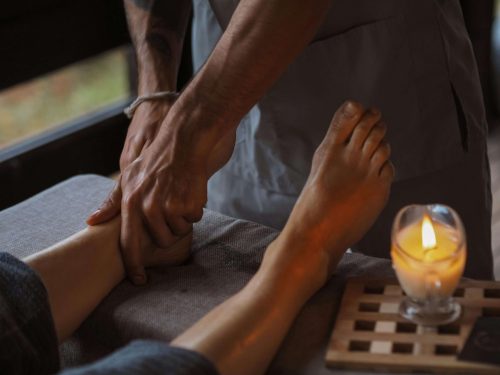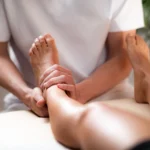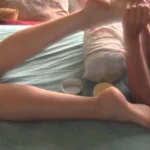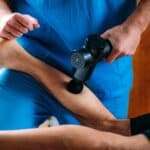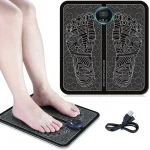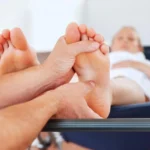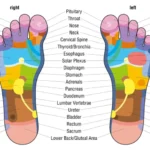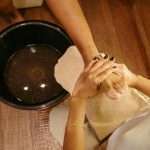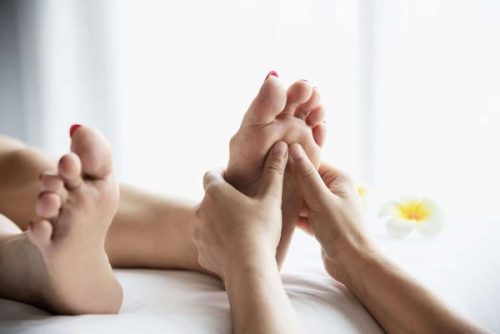Want to improve your circulation and relax tired feet? A simple foot massage can help. It boosts blood flow, eases tension, and supports overall foot health.
This step-by-step guide shows you how to do it yourself. No tools, no experience needed—just your hands and a few minutes. Give your feet the care they deserve. Let’s get started.
Table of Contents
What is Foot Massage?
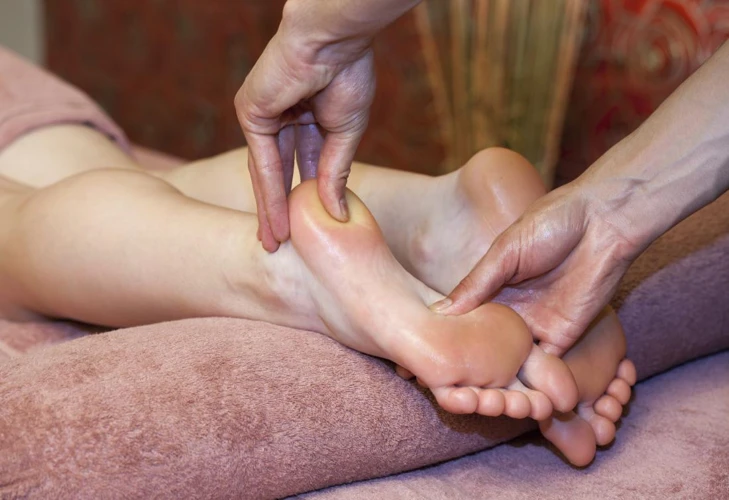
Foot massage is a type of massage therapy that focuses on the feet and lower legs. It involves applying pressure to certain points on the feet, as well as stretching and kneading the muscles and connecting tissue. This type of massage helps to improve circulation and reduce pain in the feet and lower legs. It can also be used to help relieve stress and tension, improve mood, and promote relaxation.
Foot massage is a great way to improve circulation and increase blood flow to the feet. Massage helps to stimulate the nerves, increase blood flow, loosen tight muscles, reduce inflammation, and improve overall circulation. This can help to reduce pain, improve range of motion, and help to prevent and treat medical conditions such as diabetes, arthritis, and plantar fasciitis.
Benefits of Foot Massage for Improved Circulation

- Increased Oxygen Levels: A foot massage increases circulation, resulting in increased oxygen levels in the body.
- Lowers Blood Pressure: A foot massage can help reduce the symptoms of hypertension by regulating the body’s blood pressure.
- Relieves Stress: Massaging the feet helps relax the whole body and ease the built-up tension, resulting in a sense of calm and peace.
- Reduces Swelling: Foot massage helps to reduce swelling and inflammation by stimulating the lymphatic system and improving circulation.
- Reduces Pain: Massaging the feet can help relieve pain in the feet and joints, as well as reduce the symptoms of arthritis.
- Improves Sleep: Foot massage can help relax the body and mind, leading to improved sleep quality.
How to Prepare for a Foot Massage
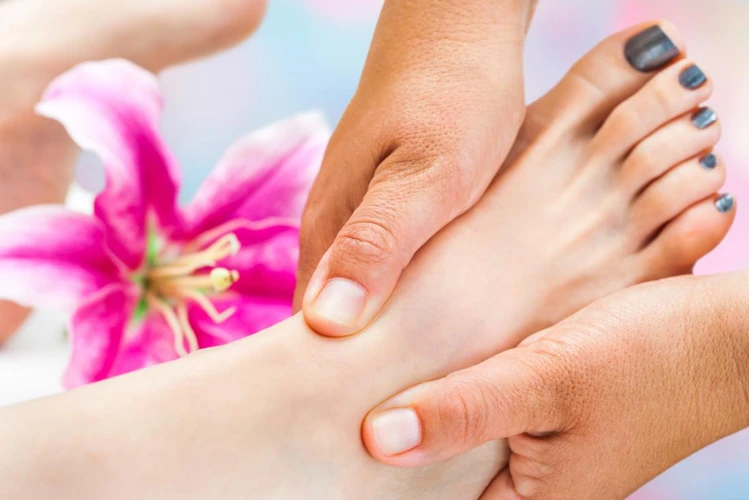
1. Gather What You Need
- Massage oil or lotion
- Basin of warm, soapy water
- Clean towel
- Comfortable chair or bed
2. Clean the Feet
Soak feet in warm, soapy water for about 10 minutes. This softens the skin and removes dirt or dead skin.
3. Dry Thoroughly
Pat feet dry with a clean towel. Be sure there’s no excess moisture to prevent slipping during the massage.
4. Apply Oil or Lotion
Rub a small amount of massage oil or lotion onto the feet. This helps your hands glide smoothly and makes the massage more soothing.
5. Get Comfortable
Make sure the person is seated or lying down in a relaxed position. Their feet should be easy to reach without straining.
Gather Materials: Gather the materials needed for a foot massage, such as massage oil or lotion, a basin of warm water, a towel, and a comfortable chair or bed.
Clean Feet: Before beginning the massage, it is important to make sure the feet are clean. Soak the feet in warm, soapy water for 10 minutes. Make sure to remove any dirt or dead skin.
Dry Feet: After soaking, pat the feet dry with a clean towel. Make sure to remove any excess moisture to avoid slipping while massaging.
Apply Oil or Lotion: Apply massage oil or lotion to the feet. This will help the massage be more comfortable and relaxing.
Position Person: Have the person receiving the massage sit in a comfortable chair or lie down on a bed. Make sure their legs are in a comfortable position, with the feet in easy reach of the massage therapist.
How to Massage Feet for Better Circulation: Step-by-Step
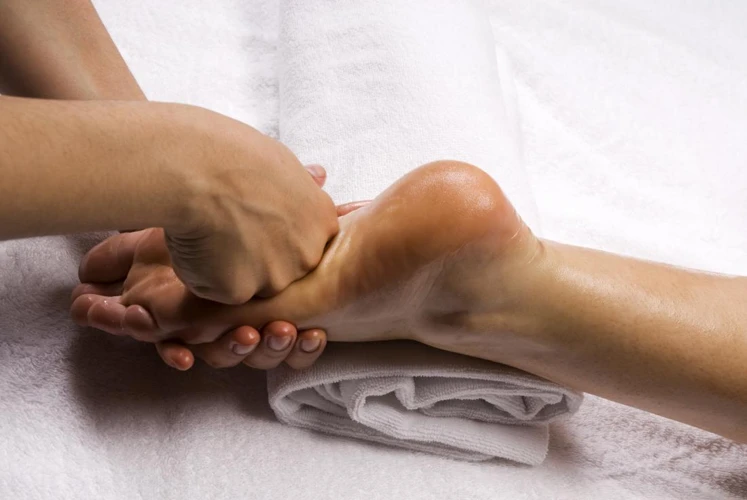
1. Start with the Toes
Use your thumb and index finger to gently squeeze each toe. Massage them one by one to warm up the area and boost circulation.
2. Focus on the Arch
Press your thumb into the sole of the foot, especially the arch. Use slow, firm pressure to ease tension and encourage blood flow.
3. Massage the Heel
Apply circular pressure to the heel using your thumb. This helps loosen tight muscles and improves circulation in the lower foot.
4. Work the Top of the Foot
Press along the top of the foot with your thumbs. Use small, circular motions to release tightness and promote flow.
5. Massage Around the Ankle
Gently massage the sides and top of the ankle using your fingers. This supports joint flexibility and helps reduce stiffness.
6. Finish with Long Strokes
End with light, sweeping strokes across the foot and toes. This soothes the muscles and leaves the feet feeling refreshed.
Benefits of Foot Massage
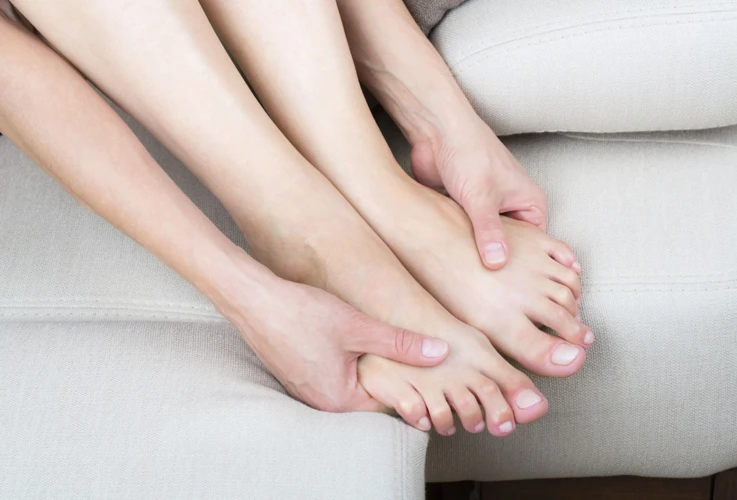
✅ Improves Circulation
Stimulates blood flow, which is especially helpful if you have poor circulation or sit for long periods.
✅ Eases Tension
Releases built-up stress in the feet and body. Can help you relax and sleep better.
✅ Boosts Energy
Relieving foot tension can lift your mood and help you feel more alert and focused.
✅ Reduces Pain
Helps ease discomfort from conditions like arthritis, plantar fasciitis, or sore, tired feet.
✅ Relaxes Muscles
Soothes tight muscles and reduces inflammation in the feet and ankles.
✅ Increases Flexibility
Keeps foot and ankle joints loose, supporting better movement and balance.
Common Reasons to Improve Circulation with Foot Massage

Poor circulation can cause fatigue, cramps, numbness, and tingling. A simple foot massage can help. Here’s why improving circulation matters:
✅ Reduces Inflammation and Swelling
Less fluid buildup means less discomfort in feet and ankles.
✅ Improves Nerve Function
Better blood flow helps nerves work more efficiently.
✅ Increases Mobility and Flexibility
Loosens stiff joints and supports easier movement.
✅ Reduces Pain, Stress, and Tension
Helps ease both physical discomfort and mental strain.
✅ Supports Digestion and Elimination
Stimulates areas linked to the digestive system through reflex points.
✅ Boosts Immunity and Overall Health
Improved circulation helps the body deliver nutrients and remove waste more effectively.
Tips for a Successful Foot Massage
Temperature: Use warm oil or lotion to massage the feet. This will help relax the muscles and make the massage more comfortable.
Pressure: Use light to medium pressure when massaging the feet. Too much pressure can cause discomfort and even pain.
Techniques: Use different massage techniques to achieve different results. For example, kneading can help to relax the muscles while rubbing can help to increase circulation.
Duration: Massage the feet for 10-15 minutes. This is enough time to help relax the muscles and improve circulation.
Frequency: Try to massage the feet at least once a week. This will help keep the feet relaxed and improve circulation.
Table:
| Technique | Pressure | Duration | Frequency |
|---|---|---|---|
| Kneading | Light to Medium | 10-15 Minutes | At least once a week |
| Rubbing | Light to Medium | 10-15 Minutes | At least once a week |
Frequently Asked Questions
Are there any risks associated with foot massage?
Yes, there are risks associated with foot massage. Before engaging in any type of massage, it is important to be aware of the possible risks. These include:
- Allergic reactions: People may be allergic to certain oils, lotions, and other products used in massage.
- Infections: If the massage therapist does not follow proper hygiene protocols, it is possible to spread bacterial or viral infections.
- Tissue damage: If the massage therapist applies too much pressure or is not trained properly, they can cause damage to the tissues of the feet.
- Nerve damage: If the massage therapist applies too much pressure or uses incorrect techniques, they can cause nerve damage in the feet.
- Blood clots: If the massage therapist applies too much pressure or does not use appropriate techniques, it is possible to cause blood clots in the feet.
It is important to speak with a doctor before engaging in any type of massage, especially if you have a medical condition. Additionally, it is important to make sure that the massage therapist has the necessary training and is using proper hygiene protocols.
How Often Should I Massage My Feet for Improved Circulation?
It is recommended to massage your feet for improved circulation at least 3-4 times a week for a minimum of 10 minutes per session. However, you can adjust the frequency and duration of your foot massage routine depending on how your body responds to it. Make sure to start out slowly and gradually increase the intensity as you progress.
What Types of Oils are Best to Use for Foot Massage?
The best oils to use for foot massage are those that have a high monounsaturated fat content. Examples of these include olive oil, coconut oil, almond oil, and avocado oil. These types of oils are beneficial for foot massage because they help to moisturize the skin and improve circulation. They also have anti-inflammatory properties that help to reduce swelling and pain. Additionally, essential oils can be added to these base oils to create a relaxing and therapeutic massage.
Does Foot Massage Reduce Swelling in the Feet?
Yes, foot massage can reduce swelling in the feet. It encourages increased circulation of blood and lymphatic fluids, which can help reduce swelling. Foot massage can also help to reduce tension and improve mobility in the feet, which can help reduce the build-up of fluid.
Steps to Massage Feet to Reduce Swelling:
- Start by gently massaging the feet with your thumbs using circular or up-and-down motions.
- Move up the foot, massaging the muscles along the arch, the toes, and the ankle.
- Apply deeper pressure with your thumbs if needed.
- Use a light pressure with your fingertips to massage the top of the foot.
- Finish the massage by gently kneading the entire foot.
It is important to be mindful of any areas of pain or discomfort, as it may indicate an underlying injury or condition. If you experience any pain or discomfort, it is best to consult a medical professional before attempting to massage the feet.
Can I use a foot massager for improved circulation?
Can I Use a Foot Massager to Improve Circulation?
Yes. A foot massager is a simple, effective way to boost blood flow in your feet. It helps relieve tension, ease soreness, and support overall circulation—especially helpful if you’re on your feet a lot or sit for long periods.
How to Use a Foot Massager for Better Circulation
✅ Choose a model with adjustable pressure, speed, and intensity
✅ Start on a low setting and increase gradually
✅ Focus on the soles and between the toes
✅ Use slow, circular pressure to target tense areas
✅ Ease up if you feel pain or discomfort
✅ Massage each foot for about 10 minutes
✅ Finish by gently rubbing your feet with a towel
Looking for the right tool?
Check out our top picks for the best foot massagers to find one that suits your needs and budget.
Using a foot massager regularly can reduce pain, improve flexibility, and help your feet feel more refreshed every day.
Final Thoughts
Taking care of your feet is more than just comfort—it’s about supporting your overall health. A regular foot massage, whether done by hand or with a foot massager, can help improve circulation, reduce tension, and keep your feet feeling strong and relaxed.
Even just 10 minutes a day can make a difference.
Start small. Stay consistent. And give your feet the attention they deserve.
📚References
- Barber, M. (2020). Foot Massage for Circulation. Verywell Health.
- The Institute of Integrative Health. (2019). How to Massage Feet for Improved Circulation.
- Wikipedia contributors. (2020). Foot Massage
⚠️ Disclaimer:
This article is for informational purposes only and does not constitute medical advice. Always consult with a licensed healthcare provider or certified massage therapist before beginning any new treatment, especially if you have pre-existing health conditions or concerns.

